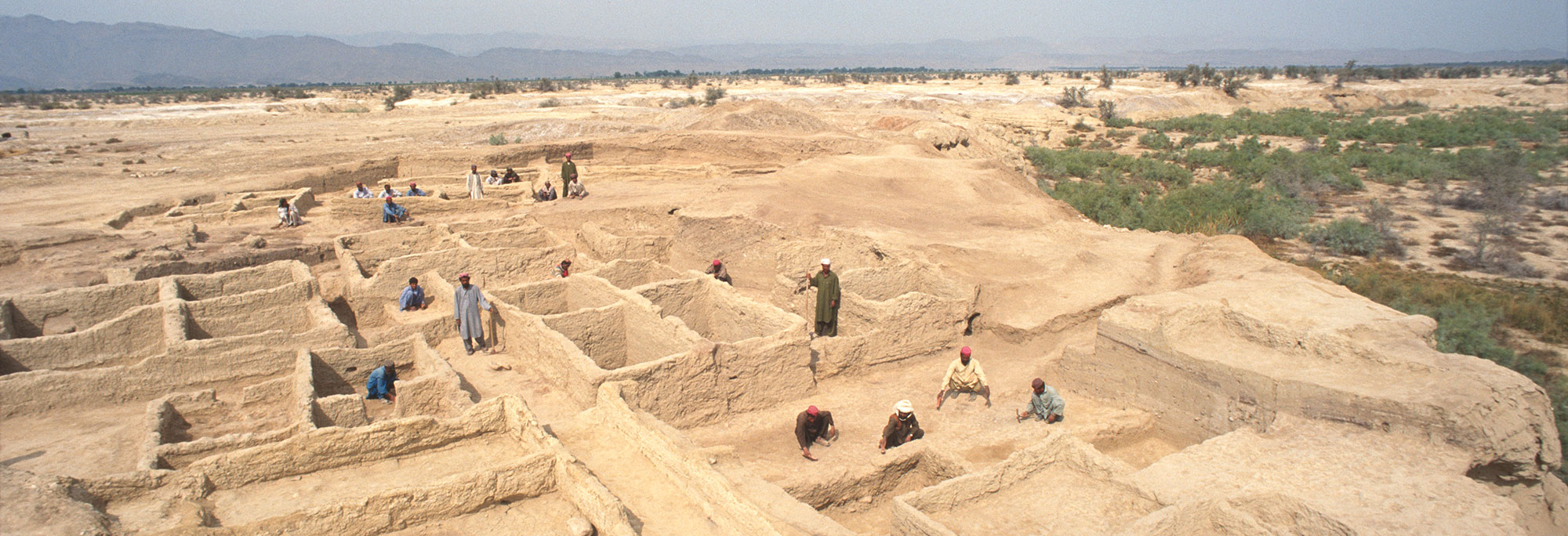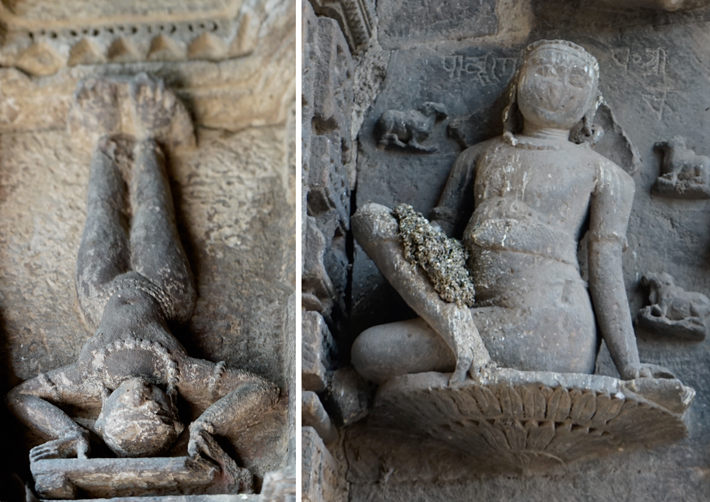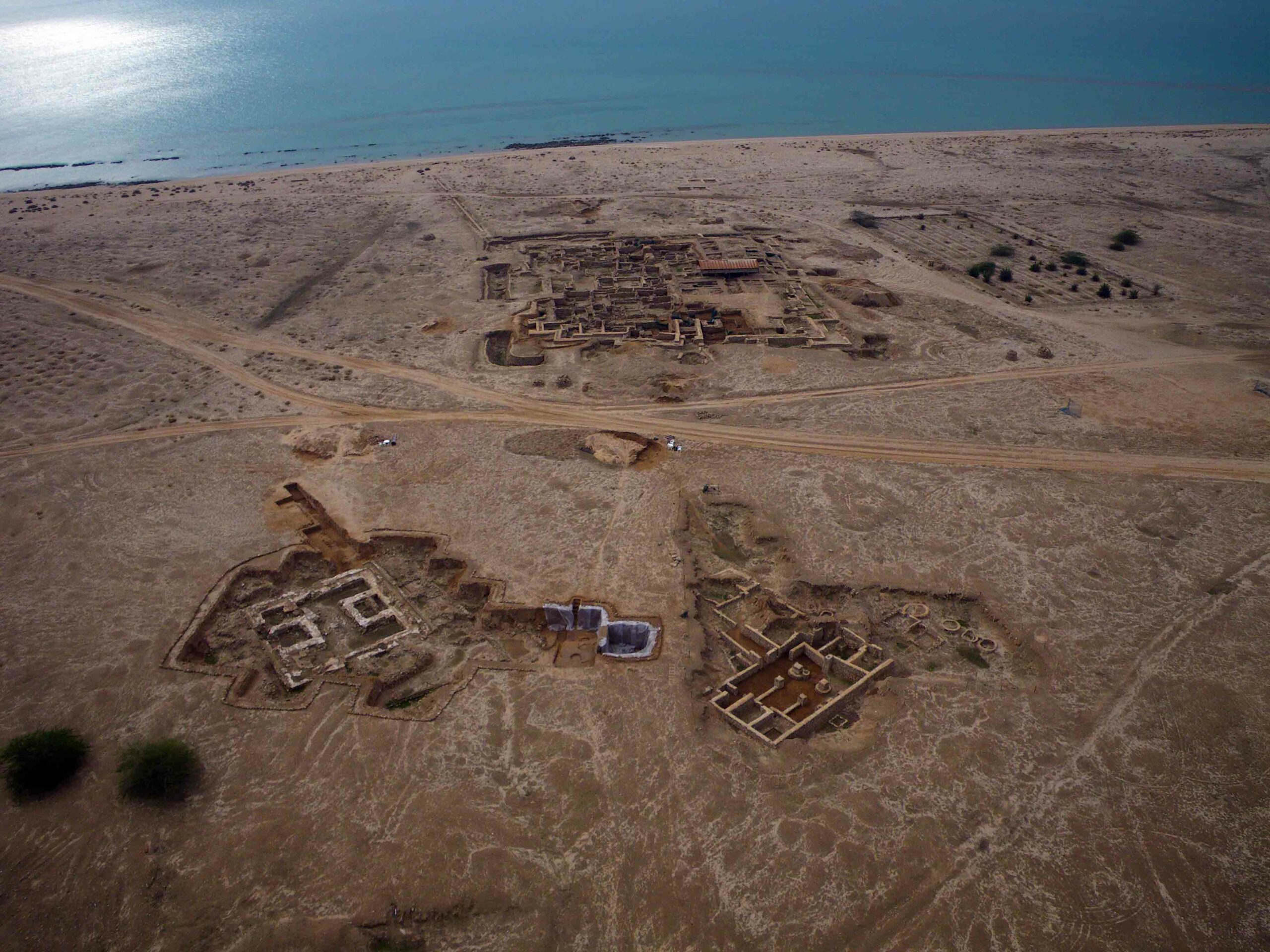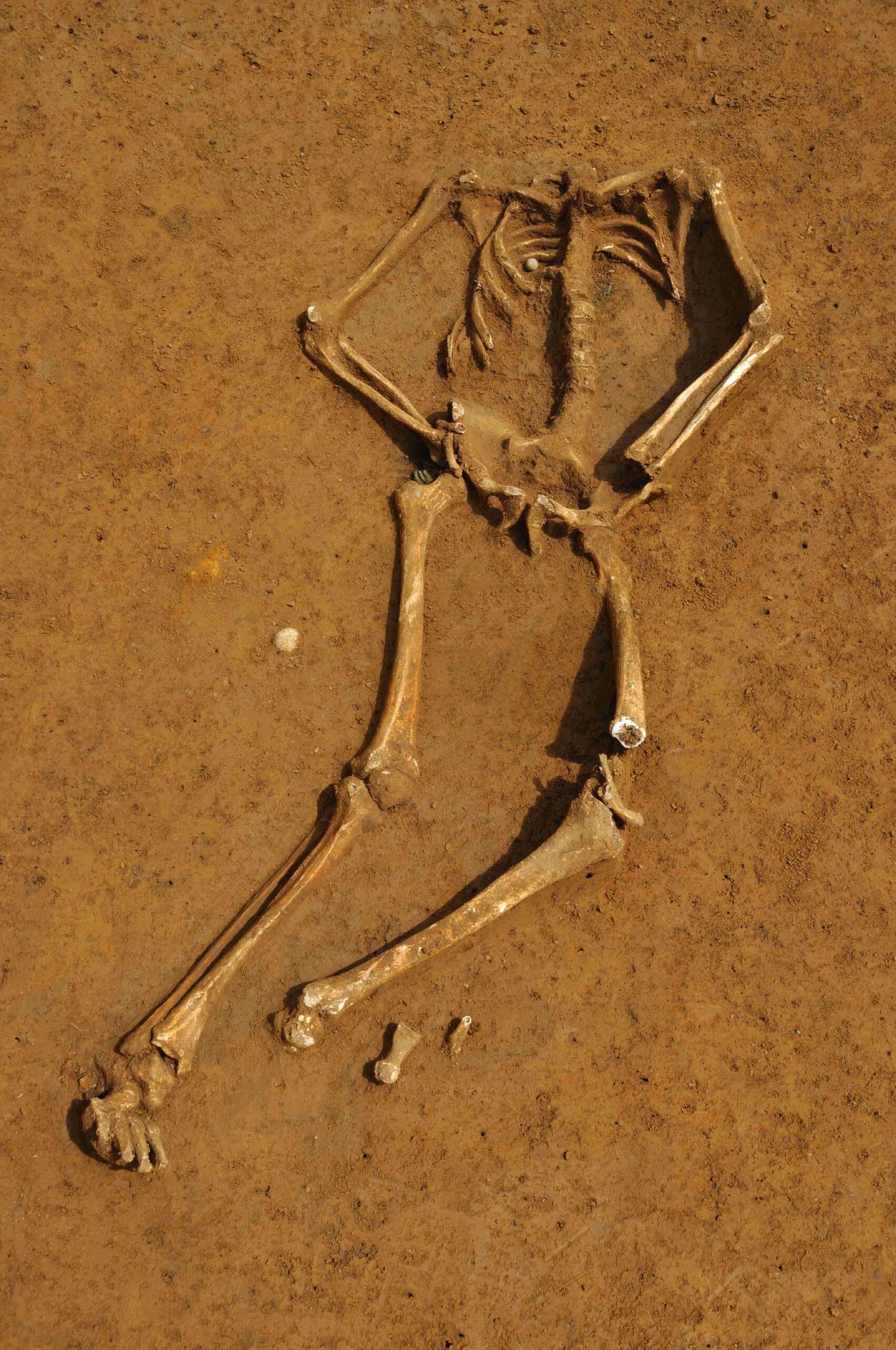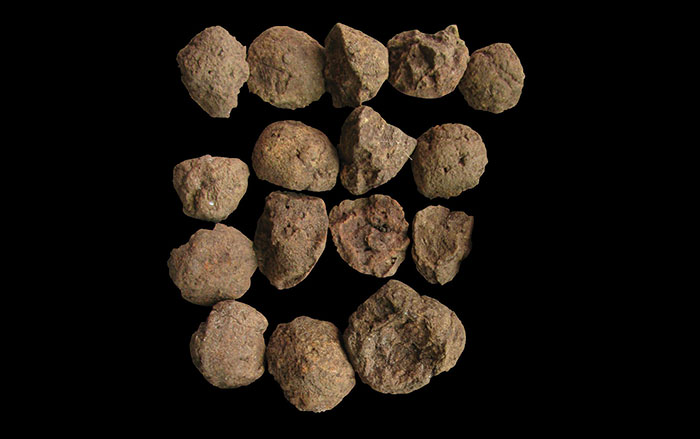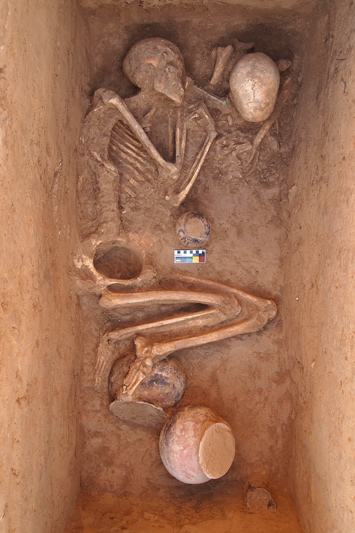
When development work began on a parcel of land in the village of Udegram in Pakistan’s Swat Valley, the landowner likely never imagined that he would find a human burial. Soon a team of archaeologists, working with funding from the Archaeology, Community, and Tourism Project of the Pakistani-Italian Debt Swap Program, persuaded him to stop building for a year while they excavated the site. They uncovered not just a lone burial, but more than 30 graves that are approximately 3,000 years old. Many of the burials have two skeletons, which Luca Maria Olivieri of the Italian Archaeological Mission, one of the archaeologists working on the site, believes is evidence of a complex funerary ritual. “This [ritual] involved decomposition in graves enclosed in wooden fences, reopening of the graves for a second burial and partial burning of the bones, sealing the graves, and, finally, the construction of a burial mound,” says Olivieri. The burials contain a great many grave goods, including high-quality ceramics, cloth, copper and bronze pins, ivory spindles, and chlorite spinning whorls.



